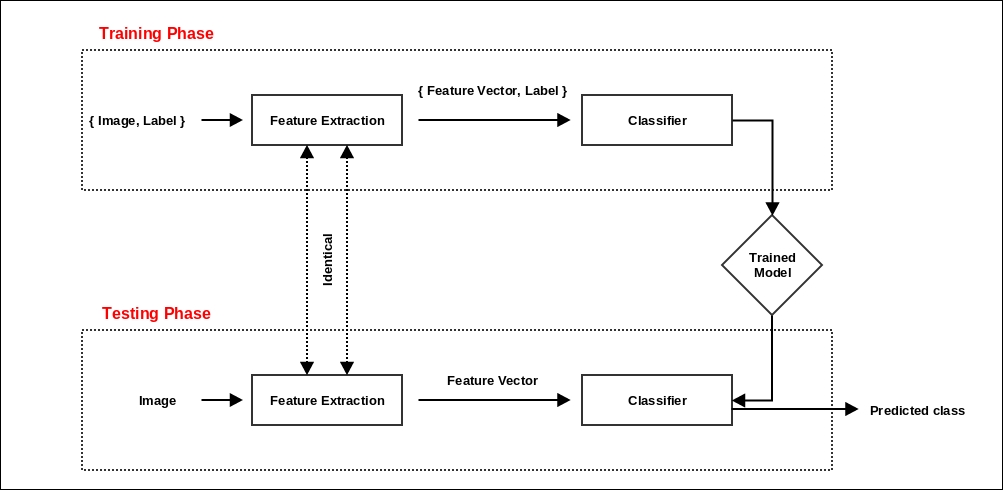Right at the outset of Chapter 6, Face Detection Using OpenCV, we had a brief discourse on image classification systems. Let's revisit that once again and put it in the context of what we have learnt about machine learning so far.
For convenience, we reproduce the figure representing a typical image classification framework that we introduced in Chapter 6, Face Detection Using OpenCV:

This schematic is, in fact, incomplete! While this perfectly describes what happens once our algorithm has already seen the training data and created its model, it does not depict what goes on during the training phase. In order to incorporate that information, let's revise the preceding diagram as follows:

As you can see, during the training phase, we provide both the image and the associated label as inputs (assume that we are dealing with a supervised machine learning setup for now). The first step is to extract relevant features from the input image. We have...



